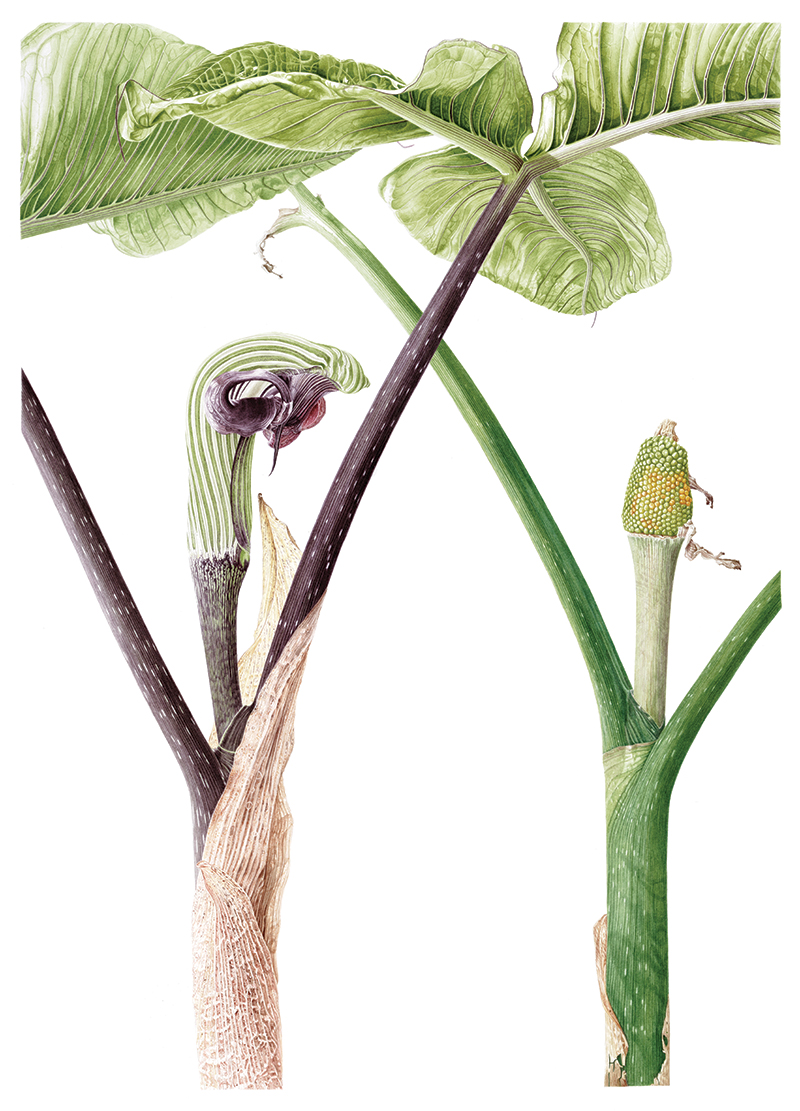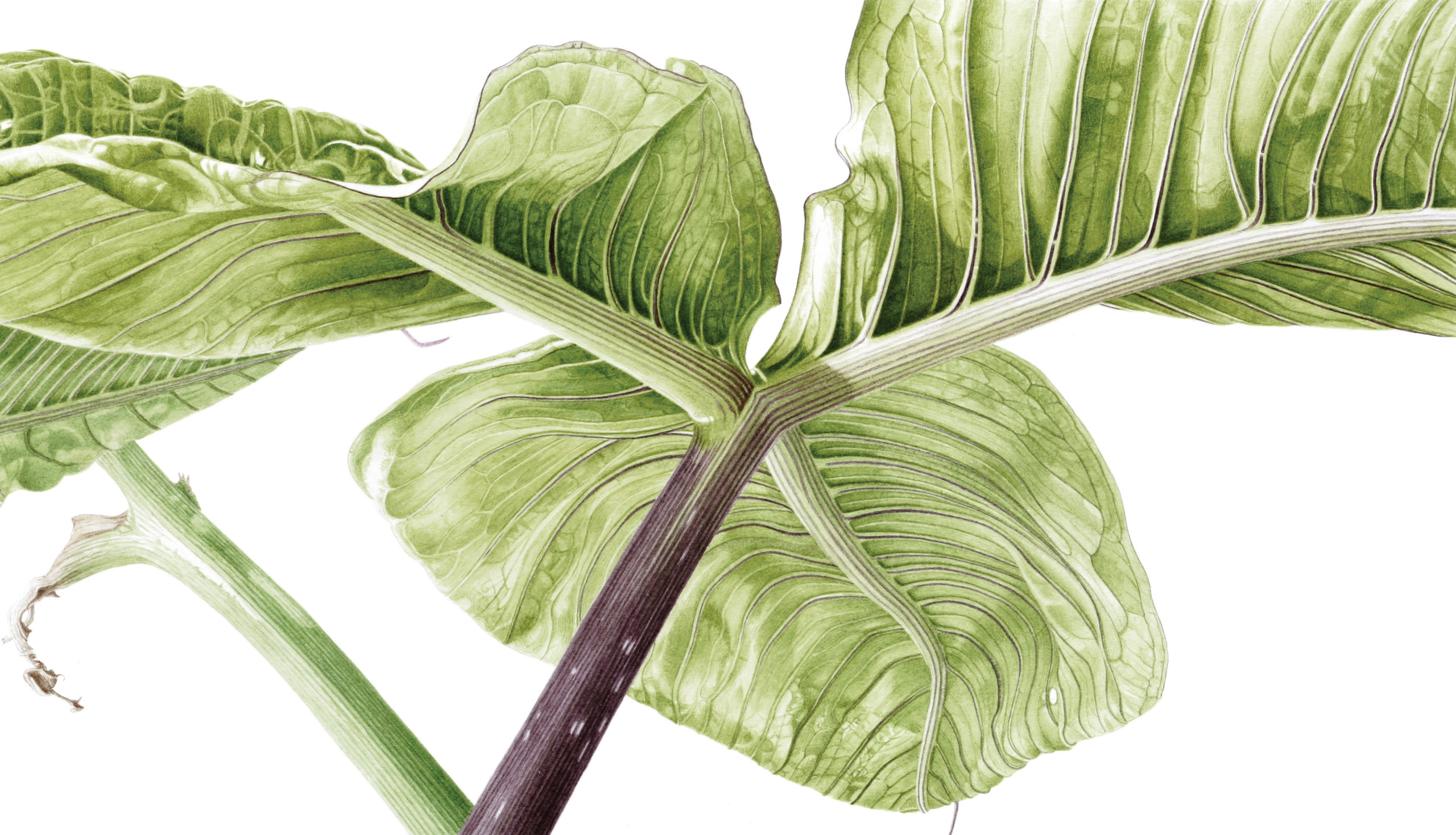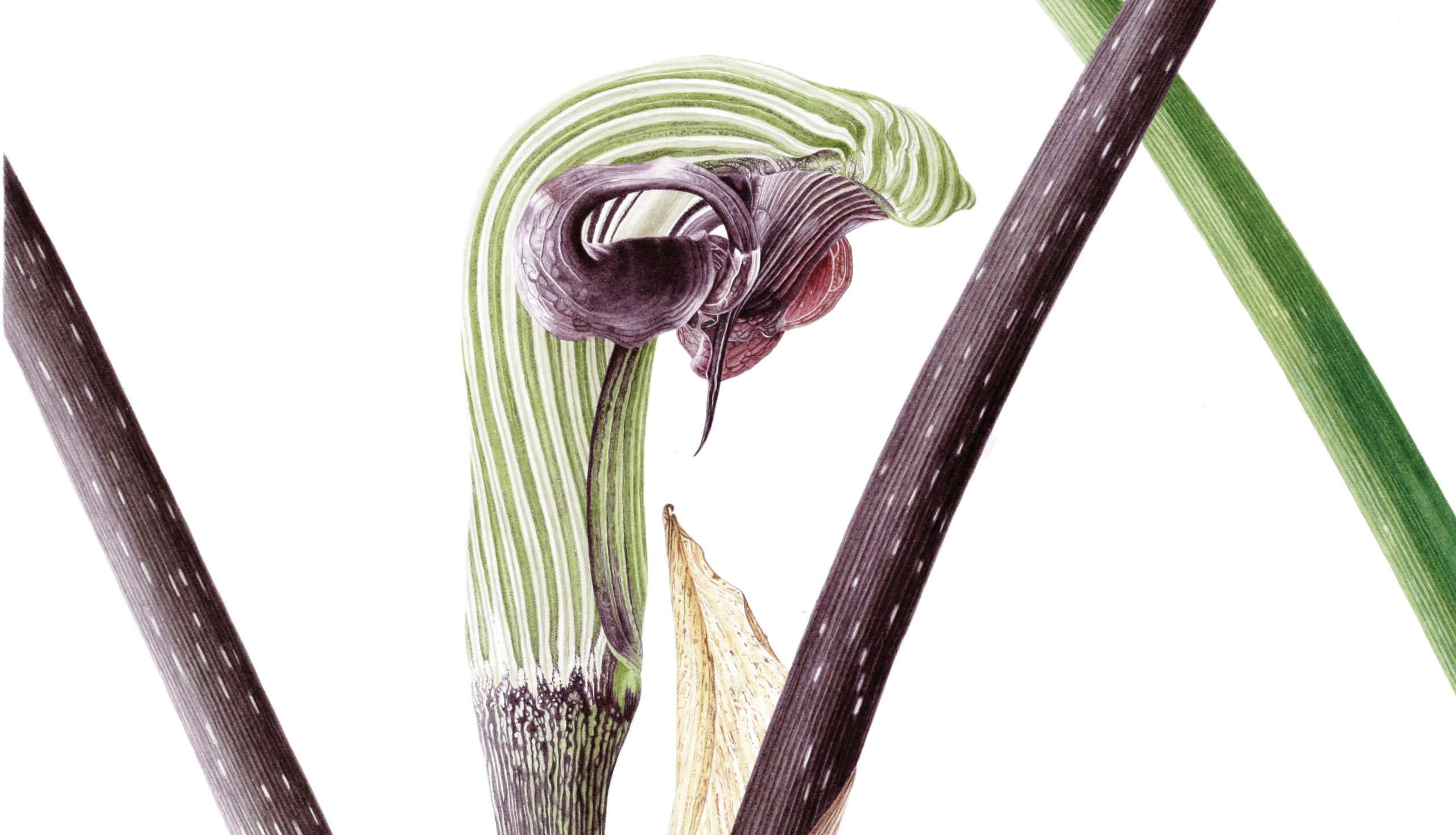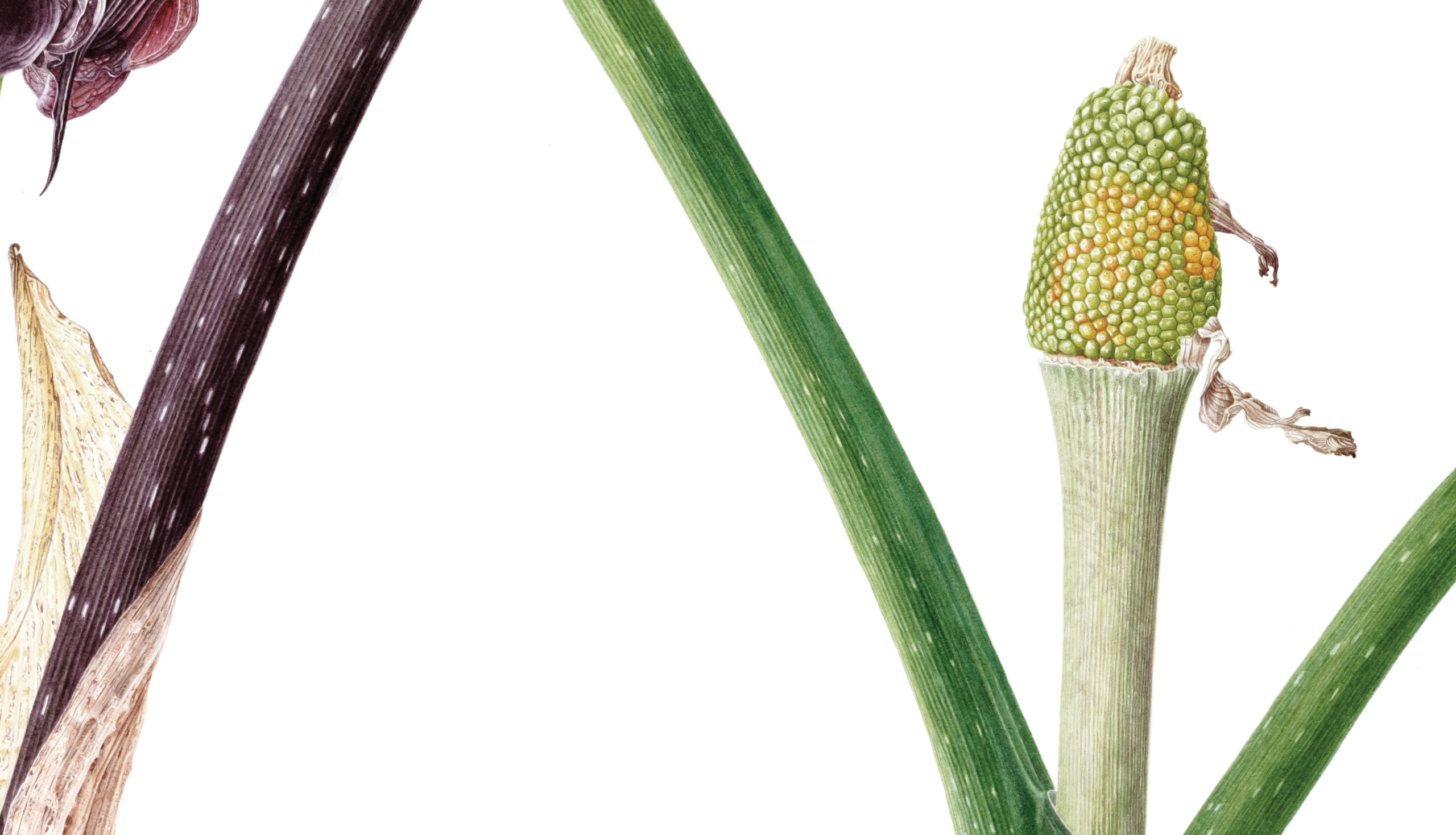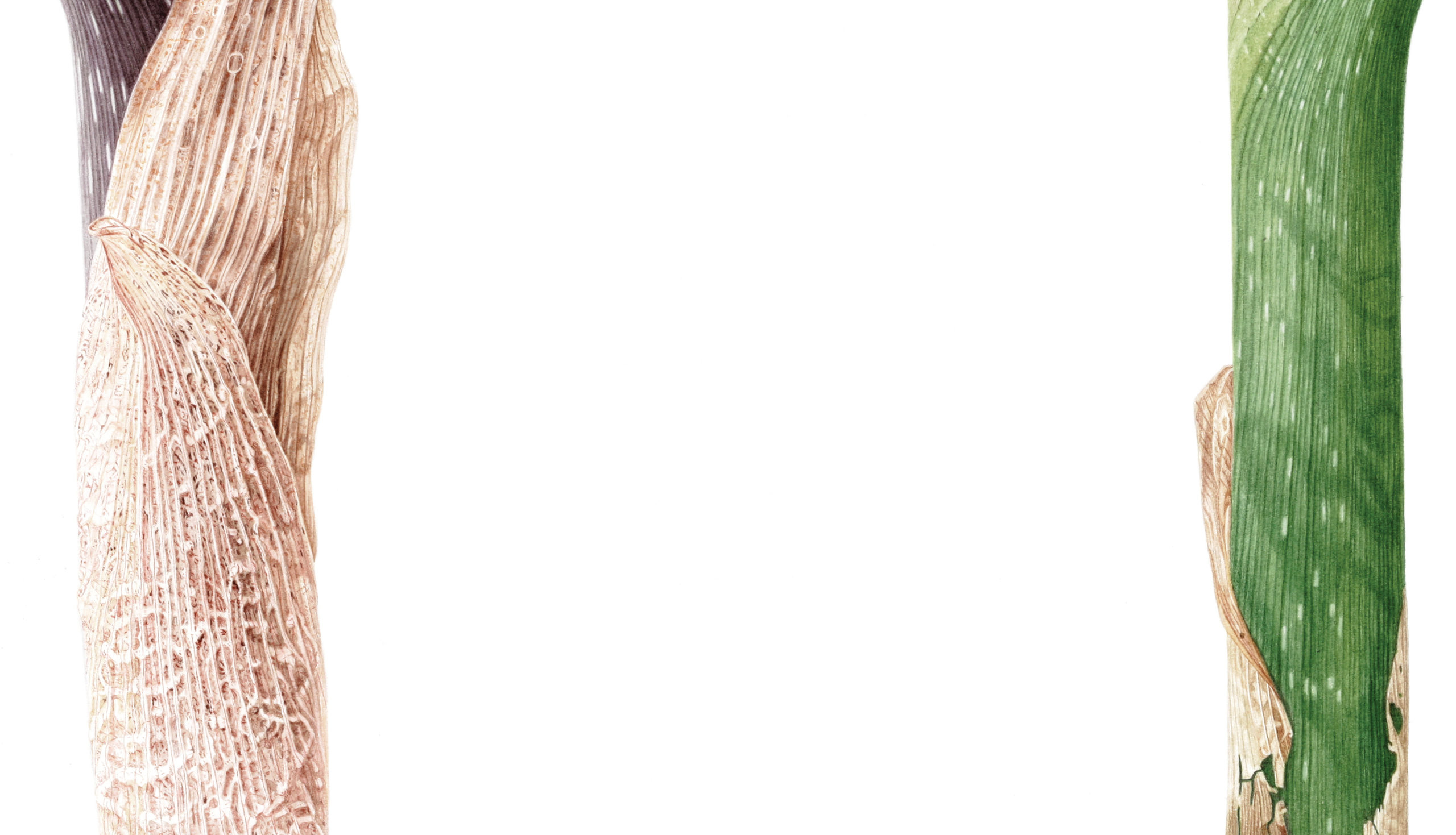Arisaema ringens
Watercolour on Fabriano 5, framed in Oak
45cm x 32cm, framed to 70cm x 50cm
This painting is part of the collection of the Hunt Institute of Botanical Documentation, a research division of Carnegie Melon University, in Pittsburgh USA and was in their prestigious 17th International Series exhibition.
An original watercolour painting of Arisaema ringens. I watched this plant grow in my Edinburgh garden for two years before painting this specimen. Depicting two seasons of growth, the inflorescence and leaf from the summer months, and the fruit from the autumn season.
This is such a unique looking arisaema, and is maybe the most alien of the flowers. This plant comes in two variants, a more purple version with chocolaty dark spathe hood and purple stems and a greener version, I decided to show both plants in the painting, I might have to show both flowers in another painting some time. The fruits on my plants remained unfertilised, which is the norm in cultivation, but the sterile fruits that were produced are lovely non the less, I kept thinking of a green mamba snake while I was painting this.
Botanical details
Japanese common name: Musashi-abumi. Abumi are early Japanese stirrups, Miyamoto Musashi (c. 1584 – June 13, 1645) was an expert Japanese swordsman and rōnin. My conjecture is that the common name may mean Mushahi’s stirrups. The abumi are very similar in shape to the hooded spathe of A. ringens.
Section Pistillata (Engl.) Nakai, Bot. Mag. (Tokyo) 43:525 (1929); G. & L Gusman, stat. nov. Subsection Ringentia (Engl.) G. & L. Gusman, stat. nov.
A. ringens is quite unique amongst Pistillata, in that it has a galeate inflorescence (helmet shaped/hooded), a simple eophyll (first leaf) and a creamy white receptacle. The galeate inflorescence is similar to A. galeatum, in the Arisaema section, however the shape of the spadix appendage shows its relation within Pistillata. It is popularly cultivated because of its great foliage and fantastic inflorescence, but it seldom produces ripe fruits, probably due to lack of a good pollinator outside of its natural environment.
Deciduous, to 110cm tall and 80cm wide, distribution through Japan; Honshu, Shikoku, Kyushu and Ryukyu, S Korea, China; Taiwan, Jiangsu and Zhejiang. Woodland clearings in leafy soil at low altitude near the seacoast. Flowering period March to May, ripening November.
“The Genus Arisaema, A Monograph for Botanist and Nature Lovers“, Guy and Liliane Gusman, 2006, A.R.G. Gantner Verlag K.G. “Flora of Japan (in English)”, Jisaburo Ohwi, National Science Museum, Tokyo, Japan. A combined, much revised, and extended translation by the author of his FLORA OF JAPAN (1953) FLORA OF JAPAN— PTERIDOPHYTA (1957) Edited by Frederick G. Meyer Research Botanist, U.S. National Arboretum and Egbert H. Walker Research Associate, Smithsonian Institution SMITHSONIAN INSTITUTION WASHINGTON, D.C. 1965
© Marianne Hazlewood
